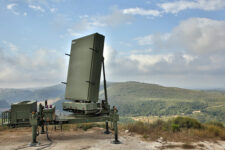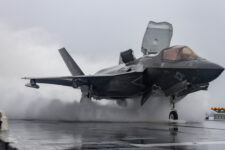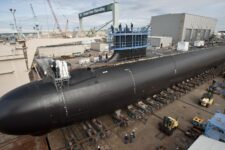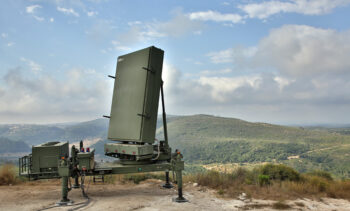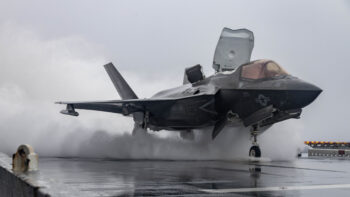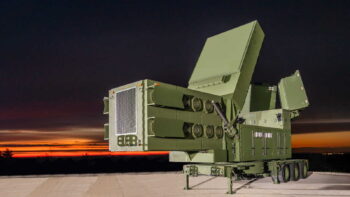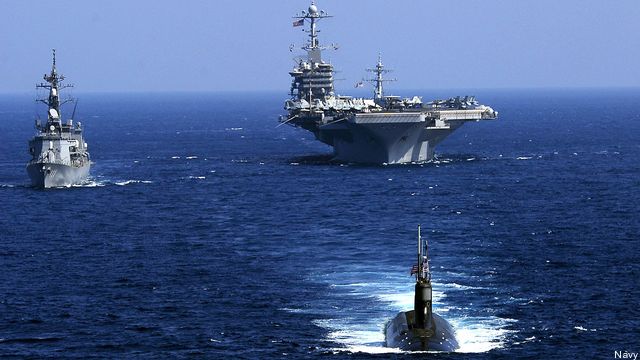 WASHINGTON: The strategic guidance issued to much fanfare by President Barack Obama and Defense Secretary Leon Panetta last January is getting a “relook” because the senior leadership has “found some problems” with it, according to the Defense Department’s head of acquisition, Frank Kendall.
WASHINGTON: The strategic guidance issued to much fanfare by President Barack Obama and Defense Secretary Leon Panetta last January is getting a “relook” because the senior leadership has “found some problems” with it, according to the Defense Department’s head of acquisition, Frank Kendall.
What are the holes? As one might expect, Kendall didn’t outline them, so we went to one of the Pentagon’s top strategy resources, Andrew Krepinevich, head of the Center for Strategic and Budgetary Assessment and graduate of Andy Marshall’s Office of Net Assessment. (For those who don’t know, Marshall is a Pentagon legend whose office helps determine our strategy.)
Kendall mentioned during his talk at the ComDef Conference last Wednesday that the strategy effort was a bit “rushed,” though he did not say what were the effects.
When Krepinevich started our conversation his first point was that we were talking about strategic guidance: “What we have is strategic guidance; we don’t have a strategy.” And the guidance doesn’t clearly outline what are commanders’ priorities. For example, he said it’s unclear whether we focus more on China or on North Korea. How much do we rely on allies and where? Add to that considerable budget turmoil, like those sequestration cuts that look increasingly likely to bite.
“You are basically running a strategy review when you are trying to put together a budget,” Krepinevich. Since one’s budget is, to a large degree, one’s strategy that may not bode well.
On top of that, the Pentagon has projected almost $230 billion in what are wonderfully called efficiencies, with Panetta having proposed $60 billion of those over the next five years. To people outside the building they are more like fairy dust, something you sprinkle through the budget and really really hope they appear. As Krepinevich notes, “the long history of these is you get a fraction of the efficiencies you hope to get.” We don’t know yet how well the Pentagon is doing scraping together these savings, but during the last drawdown in the 1990s they rarely materialized on anything close to the scale that budgeteers hoped.
There is one area that leaps to mind as a probable “problem” with the strategic guidance, especially if you’re the head of acquisition: the Navy’s shipbuilding program. After all, this is the service most responsible for managing our pivot to Asia. But the Navy will almost certainly never get near the 313-ship fleet that was the goal of its 30-year plan if the Pentagon adheres to current budget plans. Senior Navy officials have argued that the Navy fleet they plan will be extremely capable, better than the one currently afloat.
But there are signs of strain. My colleague Robert Haddick noted this in a piece he wrote for Foreign Policy:
“The Pentagon currently supplies Central Command with two aircraft carrier strike groups. In order to sustain this commitment, last week the Navy had to send the USS John C. Stennis carrier strike group back to sea four months early and only five months after returning from its last long cruise to the region. Defense Secretary Leon Panetta gave an almost-apologetic speech to the Stennis’s crew before their departure from Bremerton, Washington. This ongoing commitment, mostly in preparation for trouble involving Iran, is absorbing at least 60 percent of the Navy’s total carrier fleet and is requiring an operating tempo that is not sustainable for long.”
In the long term, this “will eventually become untenable as risks in the South China Sea and elsewhere expand,” Haddick opined.
And pushing carriers harder for longer periods of time leads to major refits sooner than planned. Maintenance work, let alone a major refit, is never cheap for a carrier. Of course, carriers don’t sail alone and the ships and boats accompanying them are sustaining more days deployed and may well need maintenance sooner as well. So this may be one of the areas under the OSD strategy microscope.
Put together the possibilities: phantom efficiencies; Asia pivot; carrier groups at sea more often for longer tours; and add sequestration and you’ve got an interesting brew.
As Election Day looms, what Trump and Harris presidencies will (and won’t) mean for defense
While analysts told Breaking Defense a Trump administration would likely be a more unpredictable one, they also said that equally, if not more important, will be whichever party controls the houses of Congress where the defense budget is crafted.



